Encuentran un sistema hidráulico de tiempos bíblicos en Israel
Un grupo de arqueólogos ha desenterrado en Israel un antiguo sistema hidráulico que fue modificado tras la conquista de los persas y que convirtió el desierto en un paraíso. En la foto, israelíes y estudiantes y voluntarios internacionales desentierran los restos en una escavación israelí cerca de Jerusalen el 23 de agosto de 2006. REUTERS/Ronen Zvulun
RAMAT RACHEL, Israel (Reuters) - Un grupo de arqueólogos ha desenterrado en Israel un antiguo sistema hidráulico que fue modificado tras la conquista de los persas y que convirtió el desierto en un paraíso.
La red de depósitos, tuberías de drenaje y túneles subterráneos prestó servicio a uno de los grandes palacios en el reino bíblico de Judea.
Los arqueólogos descubrieron primero el palacio en 1954, una estructura construida en 2,4 hectáreas de terreno, donde ahora se extiende la granja comunal Ramat Rachel.
Las recientes excavaciones desenterraron cerca de 70 metros cuadrados de un sistema hidráulico único.
"Han encontrado un enorme palacio (...) incluso mejor que los palacios de Jerusalén, (fechados) desde la Edad de Piedra tardía a finales del periodo bíblico del siglo séptimo", declaró Oded Lipschits, arqueólogo de la Universidad de Tel Aviv.
La infraestructura del palacio fue remodelada a lo largo de los siglos para hacer frente a las necesidades de babilonios, persas, romanos y hasmonaitas que regentaron la Tierra Sagrada, aseguró Lipschits, que encabeza la excavación con un estudioso de la Universidad alemana de Heidelberg.
Pero fue con los persas, que arrebataron el control de la región alrededor del 539 antes de Cristo a los babilonios, los que renovaron el sistema hidráulico y lo convirtieron en un signo de belleza.
Lipschits aseguró que añadieron pequeñas cascadas para intentar convertir el desierto en un paraíso.
"Imagine en este terreno plantas y agua fluyendo por aquí", comentó Lipschits. "Esto era importante para alguien que considera interesante la estética, para alguien que quería sentirse aquí no como si estuviera en una remota esquina del desierto".
Yuval Gadot, un arqueólogo experto en los tiempos bíblicos de la Universidad de Tel Aviv que forma parte de la excavación, declaró que no estaba claro exactamente cómo funcionaba el sistema hídrico.
"Probablemente el agua caía de los tejados de las casas (del complejo palaciego)", aclaró. "Desde ahí, se recogía por canales hasta piscinas o hasta el depósito subterráneo y continuaba hasta los campos cercanos para crear cultivos y bonitos jardines".
Durante siglos el abastecimiento de agua ha venido siendo uno de los asuntos más sensibles de Oriente Medio, donde la mayoría de la región es desértica.
Fuente: Corinne Heller / Reuters, 23 de agosto de 2006
Enlace: http://es.news.yahoo.com/23082006/44-13/encuentran-sistema-hidraulico-tiempos-biblicos-israel.html
(2) Ancient waterworks found in Israel
Persians turned network into a thing of beauty around 500 B.C.
By Corinne Heller
RAMAT RACHEL, Israel - Archaeologists in Israel have unearthed an ancient water system that was modified by the conquering Persians to turn the desert into a paradise.
The network of reservoirs, drain pipes and underground tunnels served one of the grandest palaces in the biblical kingdom of Judea.
Archaeologists first discovered the palace in 1954, a structure built on a six-acre (2.4-hectare) site where the communal Ramat Rachel farm now stands. Recent excavations unearthed nearly 750 square feet (70 square meters) of a unique water system.
They had found a huge palace ... even nicer than the palaces in Jerusalem, (dating) from the late Iron Age to the end of the biblical period in the 7th century, said Oded Lipschits, a Tel Aviv University archaeologist.
The infrastructure of the palace was remodeled throughout the centuries to fit the needs of the Babylonians, Persians, Romans and Hasmoneans who ruled the Holy Land, said Lipschits, who heads the dig with an academic from Germanys University of Heidelberg.
But it was the Persians, who took control of the region around 539 B.C. from the Babylonians, who renovated the water system and turned it into a thing of beauty.
Lipschits said they added small waterfalls to try to turn a desert into a paradise.
Imagine on this land plants and water rushing and streaming here, Lipschits said. This was important to someone who finds aesthetics important, for someone who wanted to feel as though they are not just in some remote corner in the desert.
Yuval Gadot, a biblical archaeology expert from Tel Aviv University who is taking part in the excavation, said it was unclear exactly how the water system worked.
Probably rainwater came down on the roof of the houses (in the palace complex), he said. From there, it was collected by drains into pools or to the underground reservoir and taken to nearby fields for crops or nice gardens.
For centuries, water supplies have been one of the most sensitive issues in the Middle East, where most of the region is desert.
Fuente: Reuters / http://www.msnbc.msn.com/id/14486319/
(1) Israeli and international students and volunteers dig at an archaeological site near Jerusalem August 23, 2006. Archaeologists in Israel have unearthed an ancient water system which was modified by the conquering Persians to turn the desert into a paradise. The network of reservoirs, drain pipes and underground tunnels served one of the grandest palaces in the biblical kingdom of Judea. REUTERS/Ronen Zvulun (ISRAEL)
(2) Israeli and international students and volunteers dig at an archaeological site near Jerusalem August 23, 2006. Archaeologists in Israel have unearthed an ancient water system which was modified by the conquering Persians to turn the desert into a paradise. The network of reservoirs, drain pipes and underground tunnels served one of the grandest palaces in the biblical kingdom of Judea. REUTERS/Ronen Zvulun (ISRAEL)
(3) Israeli and international students and volunteers work at an archeological site near Jerusalem August 23, 2006. Archaeologists in Israel have unearthed an ancient water system which was modified by the conquering Persians to turn the desert into a paradise. The network of reservoirs, drain pipes and underground tunnels served one of the grandest palaces in the biblical kingdom of Judea. REUTERS/Ronen Zvulun (ISRAEL)
(4) Israeli and international students and volunteers dig at an archaeological site near Jerusalem August 23, 2006. Archaeologists in Israel have unearthed an ancient water system which was modified by the conquering Persians to turn the desert into a paradise. The network of reservoirs, drain pipes and underground tunnels served one of the grandest palaces in the biblical kingdom of Judea. REUTERS/Ronen Zvulun
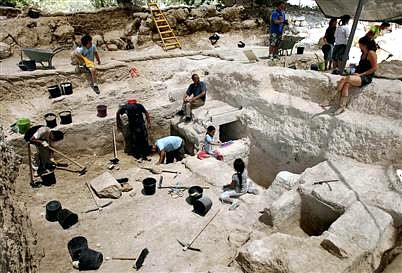
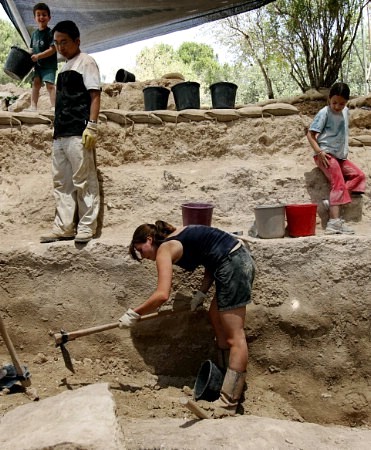
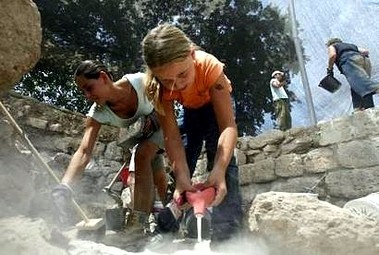
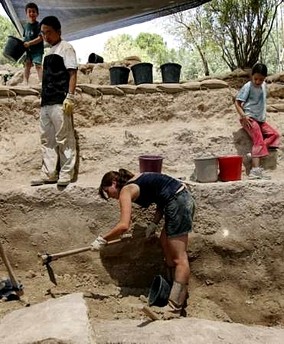
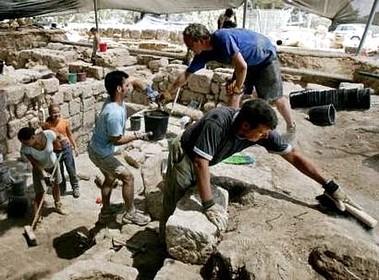
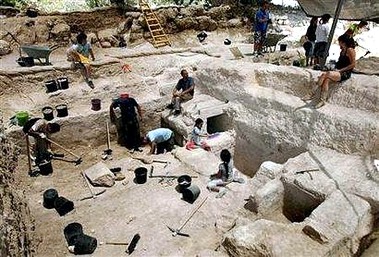
1 comentario
NATALIE VICUÑA OLIVERA -